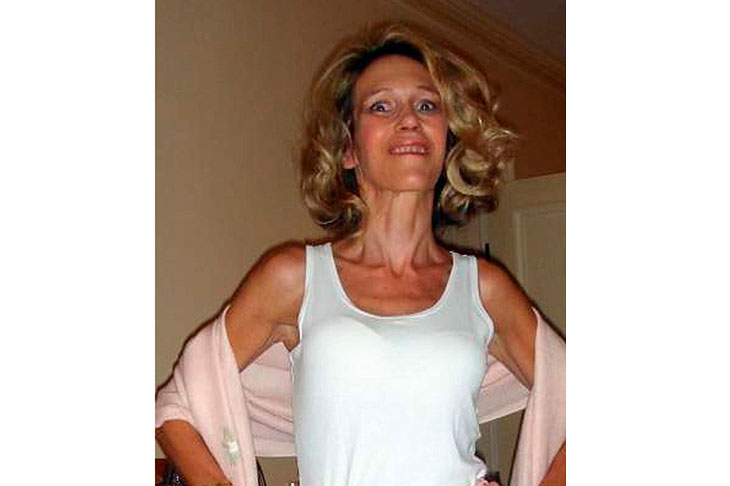It’s awful, but the surname Rausing (once synonymous only with the Tetrapak fortune) now summons up a terrible stench in the imagination. It’s that of Eva Rausing’s decomposed body, wrapped in a tarpaulin on the marital double bed in Belgravia, buried under a mattress, several flat-screen televisions and a heap of blankets and duvets. When it was discovered by police forcing open the duct-taped bedroom door in July 2012 — more than two months after her husband Hans had left it there, unable to face up to his wife’s death from cocaine-induced heart failure — the only way Eva could be identified was by a fingerprint and the number on her pacemaker.
Rarely can ‘the problems of the very rich’ have been as shockingly highlighted as they were by that dreadful story. That a brilliant and gentle Swedish grandfather, who happened to come up with the idea of the Tetrapak carton, should unwittingly spawn such wealth, such misery, such tragedy. In Mayhem, Hans’s older sister Sigrid tells her side of the story; and Eva’s family is not happy about it. Eva’s father, Tom Kemeny, has said: ‘Sigrid feels a need to tell the world, like a catharsis, that she was right and somehow saved the children by removing them from the parental home.’ He has issued a statement: the book ‘offers a cold, hollow and unsympathetic portrait of our beloved daughter’.
Thankfully, it’s not the reviewer’s job to discuss who’s right and wrong in this murky story of the mayhem in a family caused by addiction. But I must say, I thought Eva was quite sympathetically portrayed: a thin, well-meaning, vulnerable person at the mercy of the terrible power of drugs, as was her husband. The most touching glimpse is this: ‘Eva once told me of her dream of running a sweetshop in Knightsbridge — the neverland of what might have been.’ She had a sudden yearning to be a normal non-rich person dealing in sherbet lemons.
‘Hans and Eva loved their children,’ Rausing writes. ‘I know that. But isn’t that also a cliché of parenting? What is the point of love if drugs come first?’ And clearly, drugs did come first. That bedroom in Belgravia, Rausing tells us, was the couple’s drug den: a sordid room to which the domestic staff were never admitted, with dealers’ numbers scrawled on the walls.
The drawing room on the floor below was a model of bourgeois order. The bedroom contained the addiction; the rest of the house felt like a front for the recovery they, or we, had hoped for.
After a painful and long-drawn-out court case, Hans’s and Eva’s four children came to live with Sigrid and her husband Eric Abraham in 2007.
Rausing gives us poignant vignettes of her and Hans and their sister Lisbet’s happy Swedish childhood: innocent 1960s summers in the family’s seaside house, the children throwing themselves into the sea, walking the dog and making improvised tennis courts by spilling flour. I relished any mention of that always-anticlimactic word ‘Tetrapak’: the children used to take a motorboat across to an island and drink fizzy lemonade in Ringellos, ‘the Tetrapak rocket-shaped plastic bottle which eventually failed’. Fear of kidnap was always in the air: Rausing has a lifelong phobia of sirens, as the woods around the house were wired up with alarms.
By the mid 1980s Hans was suffering from heroin addiction and Sigrid experienced for the first time the terrifying feeling of entanglement in his addiction — so acute that she once cut her own arms in a depressive cry for help, in order to get a bed at the same hospital where her brother was.
As well as being a generous philanthropist (following her father’s slogan of ‘doing well by doing good’), Sigrid Rausing is the owner of Granta magazine — and I’m afraid it shows. The one thing that makes this short memoir heavy going is that she tries too hard to do Granta-worthy fine writing. Rather like the Ringellos, it fails — and becomes ‘As Told to Craig Brown’.
Very short paragraphs.
And indecipherable stuff like this:
My life is made up of rooms. I walk from room to room, each shift in atmosphere slightly jarring. In each room I tell the story.
The rooms are actual rooms, the rooms are different languages, and the rooms are different relationships.
She writes bravely about her complicated feelings of guilt in the decision to take custody of Hans’s and Eva’s children: ‘I had… a problematic and fraught perception of my own power. I also observed, more acutely, the pain and distress of the children.’
But in the next paragraph she blows it with this bit about the guilt of feeding pigeons in Sweden:
They would see me come and take off, swoop up and down, waiting for me to go. Mostly I did, but sometimes I stayed to watch them eat, studied them picking nervously at the seeds, an eye on me, an eye on the ground.
Even that felt to me like an illegitimate act of power. The pigeons were hungry; I forced fear on them.
Towards the end, she gives us some examples of her sister-in-law’s crazed fury. Eva made a wax doll of Sigrid and it fell and broke its neck, and Eva emailed her: ‘My witchcraft is going well today. See how your neck feels today.’ (After which Sigrid did fall off her horse and was badly concussed.)
She told me I had driven a stake through her heart and nails through her palms. She said I had lied in court and stolen her children. ‘I despise you with an intensity that is not describable.’
With pleasing bluntness, Sigrid sums up how impossible it can be for family members to help such people. ‘Our joint strategies were many and varied, and nothing helped.’






Comments